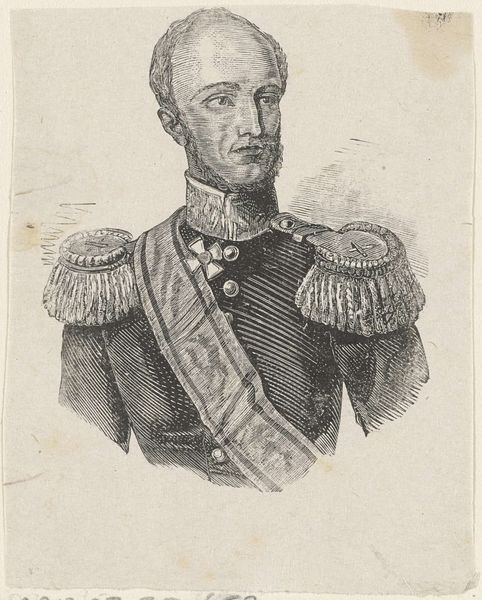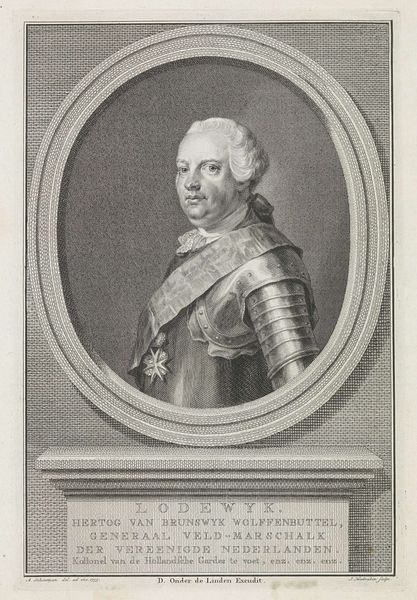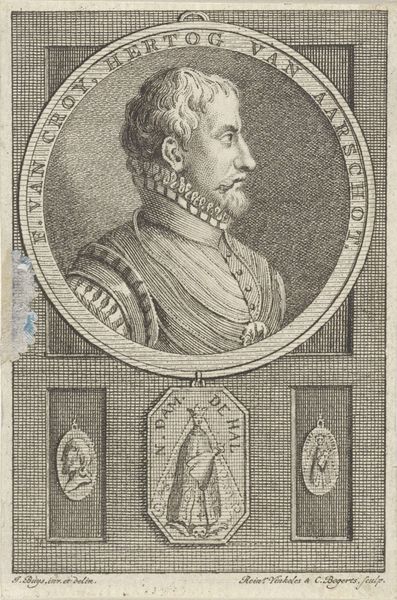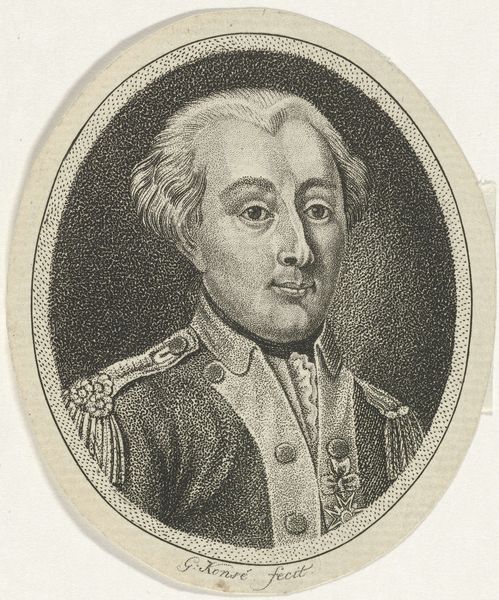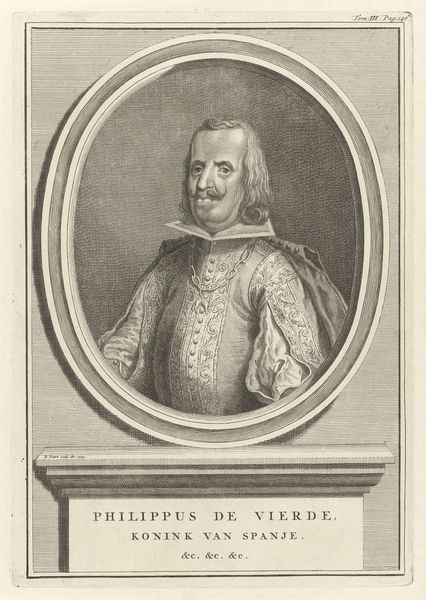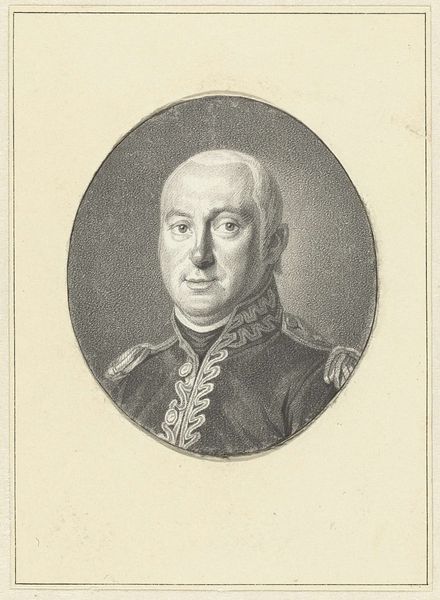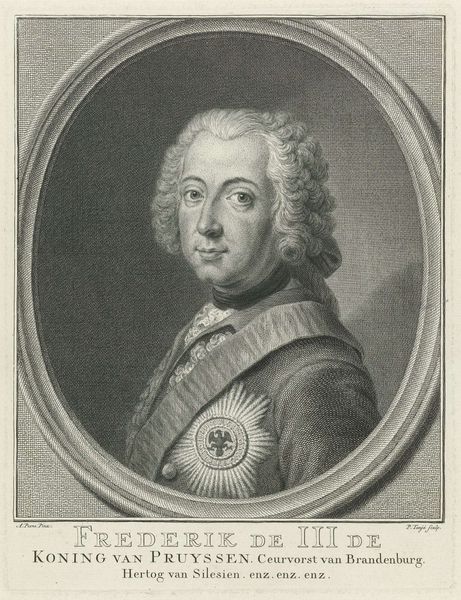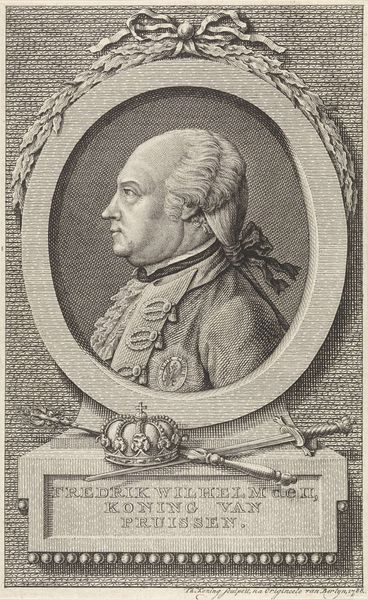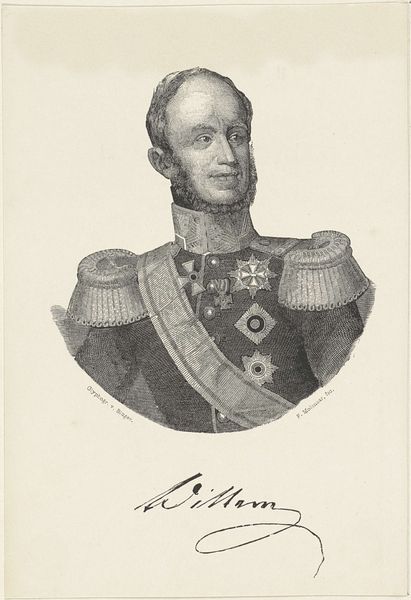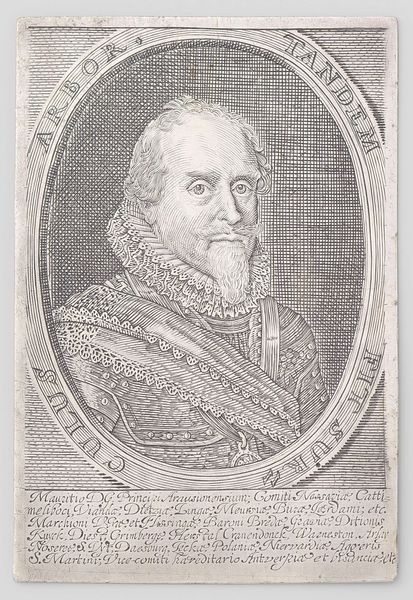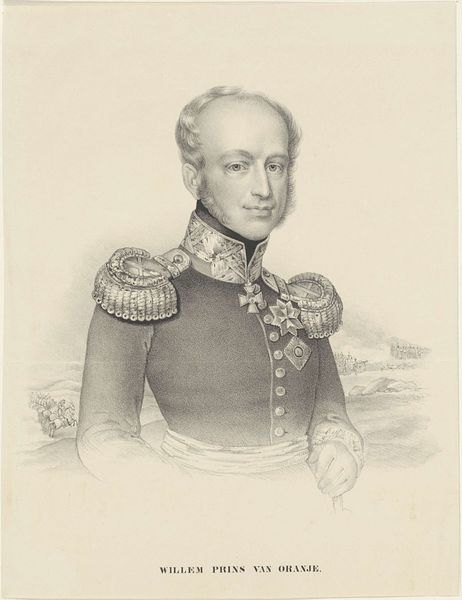
engraving
#
portrait
#
neoclacissism
#
old engraving style
#
portrait reference
#
yellow element
#
portrait drawing
#
history-painting
#
engraving
Dimensions: height 132 mm, width 95 mm
Copyright: Rijks Museum: Open Domain
Paolo Caronni made this print of Arrigo Caterino Davila in the early nineteenth century, using engraving on paper. The graphic effect is achieved through careful manipulation of the burin – a tool used to incise lines into a metal plate, which is then inked and printed. Look closely, and you'll see the many tiny marks that create tone and texture. This was skilled, painstaking work, requiring years of training. Engraving had long been used for reproductive prints, spreading images far and wide. But by Caronni's time, it was being overtaken by newer, faster printmaking techniques. Even so, the sharp, precise lines of engraving still conveyed a sense of authority, well suited to portraiture and other subjects demanding accuracy. Consider the labor involved in producing this small print, and the social status it implies, both for the sitter and the artist. Ultimately, the image prompts us to think about the changing landscape of image production in the industrial age, and the value we place on craft skill.
Comments
No comments
Be the first to comment and join the conversation on the ultimate creative platform.

